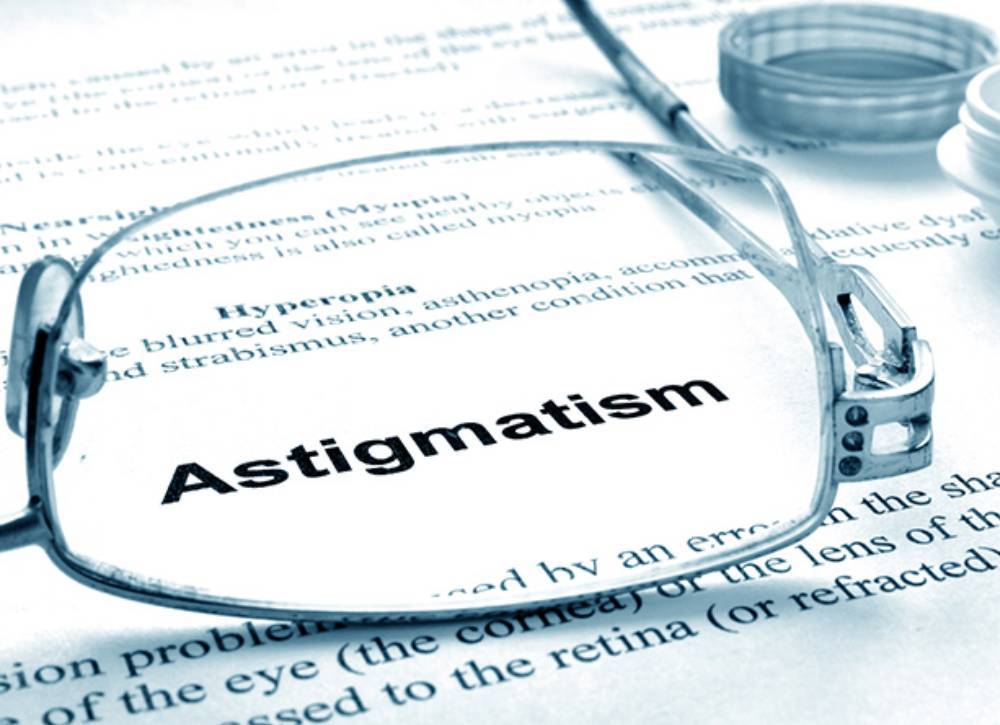What Is Astigmatism?
Astigmatism is a common eye condition that causes your vision to be blurry at all distances both near and far because the curvature of your cornea or natural lens is irregularly shaped. This refractive error occurs because your eye cannot focus light properly, directly onto your retina, the light-sensitive surface that lines the back of your eyes.
The cornea is completely round. If you have astigmatism, some parts of your cornea may be rounder than others which can cause distort in the way light rays focus on your retina. Astigmatism is a reflective error because it affects the way your eyes refract or bend light. And astigmatism often occurs with some other eye condition such as nearsightedness or farsightedness. It often comes with birth or may be developed after the eye injury or surgery.
However, not all astigmatism is the same. Astigmatism can vary in severity. The degree of astigmatism is measured in diopters. So, in the following section, we will show the astigmatism severity scale.
Astigmatism Severity Scale
A perfect eye that has no astigmatism has 0 diopters, but some people have between 0.5 and 0.75 diopters of astigmatism and some people may have higher diopters. So, there are several different astigmatism severity scales. In this section, we will list some of them.
If the diopter is lower than 1.00, you have mild astigmatism. Nearly 33 percent of people have mild astigmatism. Mild astigmatism is considered normal, and it does not need corrective lenses or surgery to see clearly. You may not even notice any symptoms with a mild case of astigmatism.
If the diopter is between 1.00 to 2.00, you have moderate astigmatism. Moderate astigmatism is a little more serious and generally requires corrective lenses or laser surgery in order to see clearly. While you may be able to get by without wearing glasses, you can notice the symptoms of moderate astigmatism and glasses can help you to correct it.
The diopter of severe astigmatism is from 2.00 to 3.00. Severe astigmatism can cause serious symptoms that affect your day-to-day functioning. Blurred vision from severe astigmatism can give you headaches that can take a toll on your health.
Meanwhile, if the diopter is higher than 3.00, you may have extreme astigmatism. Extreme astigmatism will require treatment so that you can see objects clearly both near and far. If you do not treat extreme astigmatism, you will not be able to see clearly at all.
So, what level of astigmatism requires glasses?
What Level of Astigmatism Requires Glasses?
From the above information, you have learned some astigmatism severity scales. So, what level of astigmatism requires glasses?
If you have mild astigmatism, wearing glasses or other astigmatism treatment is not typically necessary. But if you have moderate or worse astigmatism, you need to wear glasses or take some other treatments.
If you need a pair of glasses to correct astigmatism, you can try CARFIA glasses. They are stylish and come at a cheap price. In addition, the glasses will be mailed to you with great convenience.
What’s more, it is important to have a regular eye checkup because astigmatism can change over time. If you wear glasses, you need to be sure that your prescription stays correct. If you do not wear glasses because you do not need them now, it is still important to pay attention to your eye health in case you develop worse astigmatism later on.
How bad is my astigmatism? After reading this post, you may have known. If you have any different ideas for the astigmatism severity scale, you can share them in the comment zone. If you have any problems with glasses or sunglasses, you can contact us via the email service@carfia.com and we will reply to you as soon as possible.






































1 comment
Bobbie
My son has astigmatism of 13. Walmart eye care said they couldn’t get lenses for him. Would your glasses work for him?
My son has astigmatism of 13. Walmart eye care said they couldn’t get lenses for him. Would your glasses work for him?